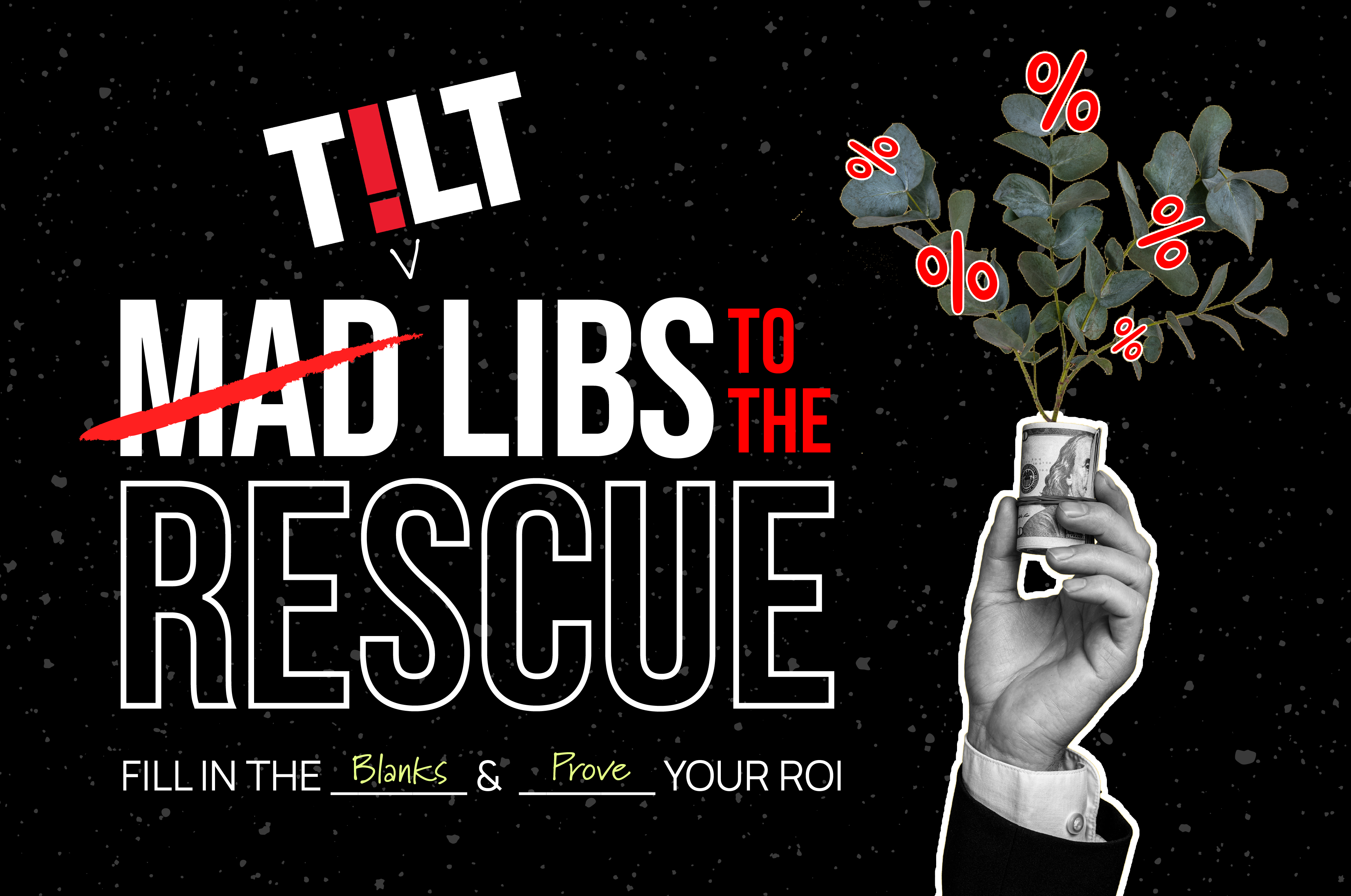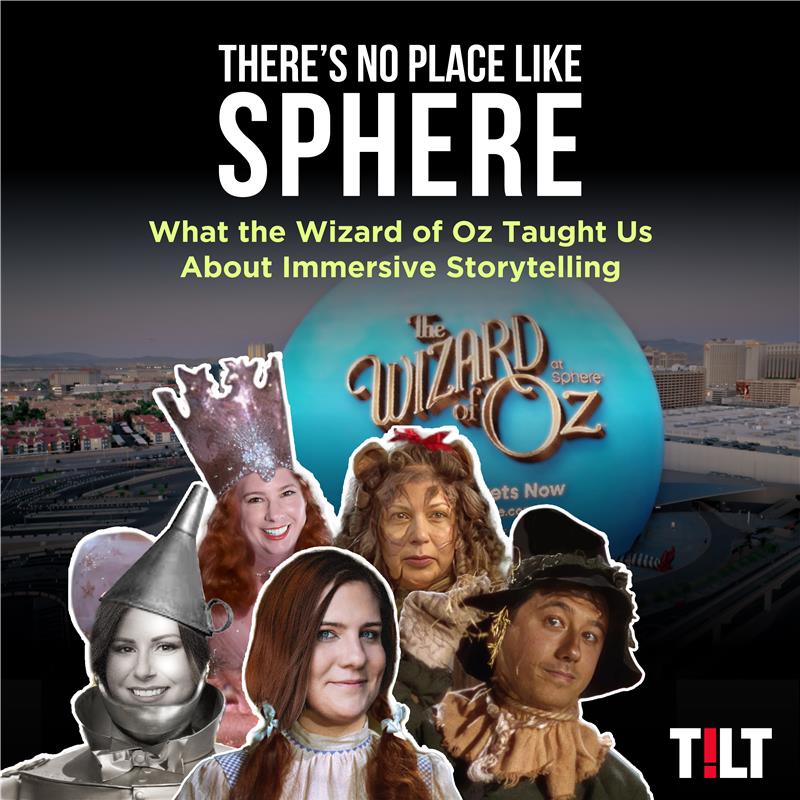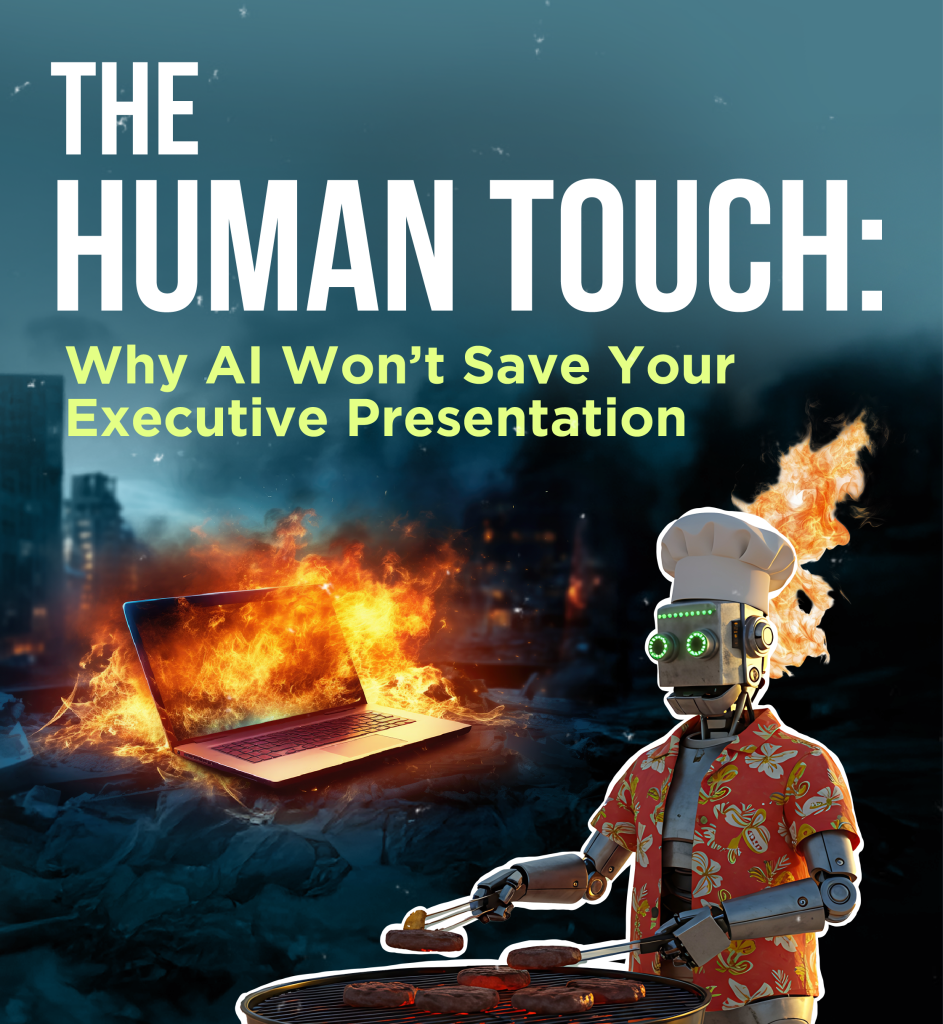
Your Event’s ROI Is in the Story—Start Writing It Now
Events are totally worth the money—but only if you can prove it.
Even in a digital age, nothing beats the power of face-to-face connections—where trust is built, ideas are sparked, and relationships are strengthened. You can design the most mind-blowing experience, but without proof it worked, it’s just an expensive party.
Budgets are tight, and events are often the first thing on the chopping block. Sure, we’re biased—but we know events are worth every penny. And our job? To help you tell the story so everyone else sees the value, too.
Here’s the thing: Events, like everything else these days—from Big Macs to concert tickets—are expensive, and the “why” behind them often gets lost in the shuffle. Let’s fix that. If your event doesn’t deliver results, don’t bother. But if it does? Let’s make sure everyone knows why it was worth every dollar.
The secret to success? It’s all about the story. You wouldn’t green-light a movie without a script—so why would you produce an event without one?
Proving Your Event Matters Starts on Day One
ROI doesn’t magically appear after the fact. It has to be baked into the story from the beginning. Start with a clear vision of what success looks like and how you’ll achieve it. The best part? You don’t have to write the story from scratch—you just need to fill in the blanks.
Think of it as filling in the blanks of your event’s T!LT Libs —a simple framework to ensure your plan stays focused and aligned with your goals.
We’re putting time and money into creating [this event] for [this audience] to [achieve this goal], because [insert reason here], and we’ll do it by [explain how].
Example: We’re hosting a leadership retreat for mid-level managers to strengthen team alignment and improve cross-departmental collaboration. We’ll do it by facilitating interactive workshops, sharing company vision updates, and providing opportunities for informal connection and brainstorming.
This isn’t just a fun exercise—it’s the foundation for everything that follows. When you know your “why,” your decisions become clearer, your resources go further, and your outcomes are easier to measure. Skip this part, and you’re just throwing darts in the dark. Except those darts are expensive—so maybe don’t.
Let’s break it down:
STEP 1 : Write the Story First
If you can’t sum up why you’re doing this event in one sentence, stop everything. You’re not planning—you’re winging it. And nobody wants to explain a wing-it budget to the CFO.
Before you start picking out projection mapping that’s cooler than it is functional, or planning pyrotechnics that will scare the front row, write that story.
Every great event starts with three things: a purpose, an audience, and a clear idea of what success looks like:
Why: What’s the purpose of this event? If your answer is “because we always do it,” throw that answer in the trash.
Who: Who’s your audience? If you’re trying to please everyone, you’ll please no one. Narrow it down to the people who matter most.
What: What does success look like? Be specific. Are you aiming for 50 leads? $500K in sales? A standing ovation? Define it, or you’ll never know if you hit it.
STEP 2: Make the Story Happen
So, you’ve filled out your T!LT Libs. Great! Now comes the tricky part: bringing it to life and staying on track. Execution isn’t the time for guesswork—it’s where you prove your event matters. Here’s how to make it happen:
Collect the Data
Tracking from day one is non-negotiable. Insights don’t just fall into your lap—you need to go get them. Here’s how:
Pre-event surveys: Find out what attendees want before they even show up. Tailor the experience accordingly.
Registration forms: Go beyond names and emails. Dig deeper to understand your audience.
Engagement tools: Use event apps, live polls, or gamified activities to track what attendees are actually doing—and loving.
Post-event feedback: Close the loop with surveys that ask the tough questions: Did we deliver?
New RFID, NFC, or Bluetooth tech: Want to know where the buzz was (or wasn’t)? Attendee tracking systems show you the hotspots and the dead zones.
Bottom line: If you’re not tracking, you’re guessing. And guesswork? Not a strategy.
Stay on Target (and Avoid Shiny Objects)
Fancy projection mapping? Jaw-dropping entertainment? Sure, they might look cool—but if they don’t serve your story, they’re just pricey distractions.
Every decision—keynote speakers, stage design, even the swag—should tie directly back to your T!LT Libs. Ask yourself: How does this serve the purpose, the audience, and the goal? If the answer is “it doesn’t,” cut it.
This doesn’t mean there’s no room for fun and flash. When used intentionally, the flashy can be powerful:
A dramatic drone show can amplify your product launch by spelling out your tagline in the sky, creating a memorable moment that reinforces your message.
A live artist creating a mural during the event can visually capture your brand values, leaving attendees with a tangible connection to your story.
Interactive LED wristbands can pulse with your event’s music and messaging, fostering a sense of unity and reinforcing your theme in a way that engages everyone.
A surprise percussion performance can align with a teamwork-focused event, symbolizing collaboration and shared rhythm in an engaging, experiential way.
Leave Room for Magic
Not every moment needs to be measured. Sometimes, the most meaningful connections come from the unexpected:
A candid conversation over coffee.
A chance meeting in the hallway.
A heartfelt thank-you that leaves your audience genuinely moved.
This isn’t fluff—it’s the human side of ROI. Build in opportunities for surprise and delight, but make sure they still align with your story.
Stick to your story, track the data, and sprinkle in a little magic. That’s how you bring your event to life and make the impact undeniable.
Part 3: Share the Story (Prove the ROI)
Even the best event won’t justify its budget if you can’t communicate its value. The whole point is to show that your event mattered—and that it was worth the investment.
To make your case, you need to break it down into clear, actionable components:
1. Tangible Results
This is your hard data—the proof your event wasn’t just a pricey party. Leads, sales, satisfaction scores—these are your headline stats.
“We generated 75 qualified leads, closed $300K in new sales, and achieved a 95% attendee satisfaction rate. Boom.”
“Attendees shared posts about the event 150 times, reaching over 30,000 people organically.”
2. Intangible Wins
Some of the most powerful outcomes can’t be measured with numbers. These are the moments that build trust, strengthen relationships, and energize teams.
“Clients left feeling reconnected with our brand, and employees walked away energized and aligned on the company’s vision.”
3. Surprise and Delight Moments
Not every success is planned—and sometimes, the unexpected is what makes the biggest impact. These moments create buzz and stick in people’s minds.
“One attendee described an impromptu brainstorming session over coffee as the highlight of their week.”
4. Call to Action: Justify Future Investments
Tie it all together by connecting the dots between the event’s success and its long-term value. Use your story to:
Prove why future events are worth the budget.
Show how this event supported broader business goals.
Demonstrate that events aren’t just expenses—they’re strategic moves with measurable and intangible impact.
Stitching It All Together with T!LT Libs
Once you’ve nailed down the key components, it’s time to pull them into a story that’s impossible to ignore. Use this plug-and-play framework to make your case effortless and compelling:
We invested time and money to produce [this event] for [this audience] to [achieve this goal]. It wasn’t just an expense—it was a strategic move. As a result, we achieved [this measurable result], supported [this business impact], and created [this intangible win or surprise-and-delight moment]. The event delivered on [its objectives], strengthened [key relationships], and positioned us for [specific future success]. By tracking engagement with [surveys, tools, or systems], we proved this event wasn’t just worth the investment—it’s driving our long-term goals.”
This isn’t just a summary—it’s your proof of concept. Use it to:
Justify future event investments.
Demonstrate how your event aligns with broader business objectives.
Show that events aren’t just expenses—they’re strategic moves that deliver real, measurable value.
So, there it is: tangible results, intangible wins, and a killer narrative to tie it all together. Now, go share the story and make sure everyone—from your boss to the boardroom—knows why it mattered.
Remember, your event isn’t just a line item—it’s an opportunity to create lasting impact. Make sure your story proves it.
*********
Ready to Dive Deeper?
We’ve covered the “why” and the framework for proving ROI, but the next step is where the magic happens—execution. From pre-event planning to post-event storytelling, we’ll break down the tools, tactics, and templates you need to bring it all to life in our future article: “Proof Over Party: The T!LTed ROI Checklist You’ll Actually Want to Use”



